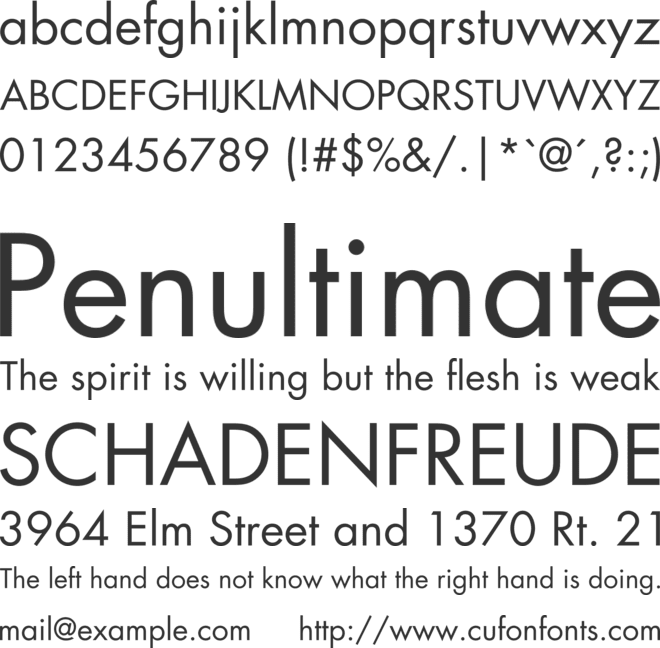

“A specimen of the Futura typeface.” by Sherbyte is in the Public Domain The Futura Font in History

The font has a low x-height, making it slightly difficult to read in long-form paragraphs of text. Families like the Futura condensed font or the Futura bold font can be used on display copy. Over the years, many versions have emerged from different type foundries. The Futura display font can create particularly catchy headlines.

That also implies that in a paragraph of text, the font needs more line spacing. This makes the font look elegant and sets it apart from other geometric fonts. Ascenders and descenders in the lowercase letters are tall and go over the height of uppercase characters. Lowercase letters like the ‘a’ are the exception when it comes to the even width. The font uses basic geometric forms and even-width strokes that eliminate any type of contrast. “Bauhaus” by Gaku is licensed under CC BY 2.0. It became instantly popular upon its release, and now it’s pretty much everywhere. The Futura font resulted in clean, simple shapes that conveyed a modern and forward-looking idea. Renner wasn’t involved with the Bauhaus but did share the same ideology of stripping forms down to their essence. Function over form resulted in a typeface that didn’t include unnecessary ornamental elements. The Bauhaus ideology was based on simple, modern, and functional geometry. The typeface was based on the geometric Bauhaus design style that had its boom between 19. It was commissioned as a typeface by the Bauer Type Foundry for the New Frankfurt project, which was an affordable modernist housing project. Futura Font Historyįutura was designed by renowned German type designer Paul Renner in 1927. “The historical plaque on the Apollo 11 lunar module “Eagle” by NASA is in the Public Domain. The high point for the Futura font was its engraving on a plaque to be left on the Moon.



 0 kommentar(er)
0 kommentar(er)
